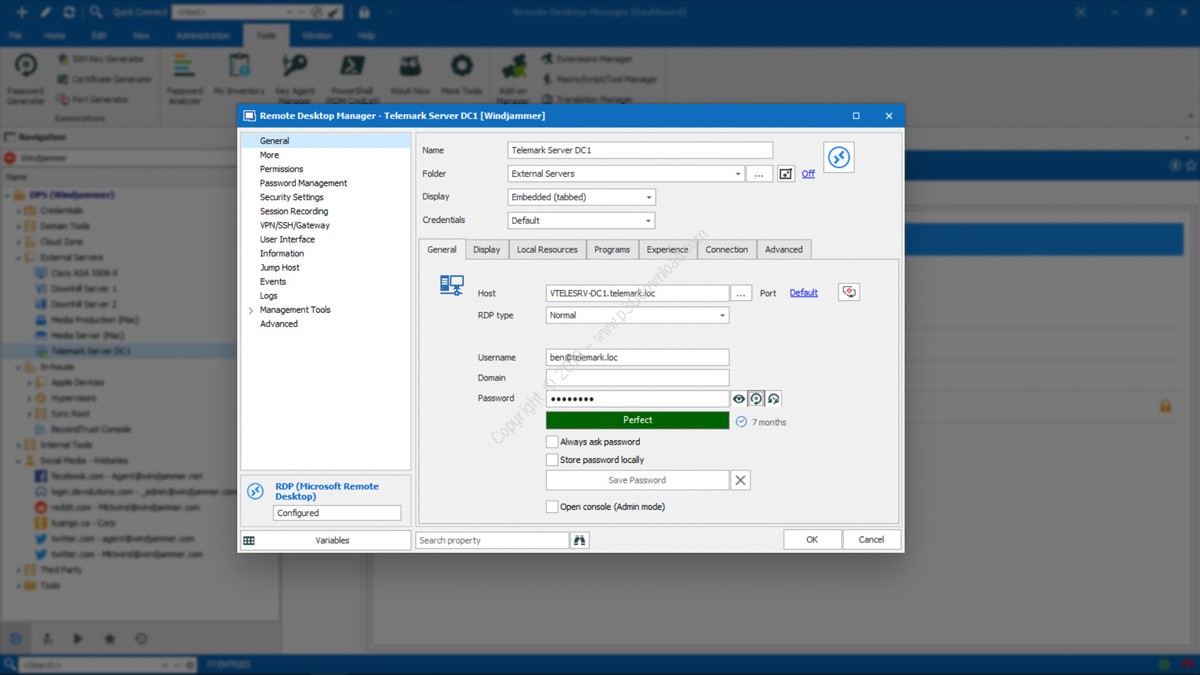

- #DEVOLUTIONS REMOTE DESKTOP MANAGER ENTERPRISE HOW TO#
- #DEVOLUTIONS REMOTE DESKTOP MANAGER ENTERPRISE PASSWORD#
When you stay within the confines of your CyberArk ecosystem, you typically do not need to use this option. This allows your organization to grab certain passwords whenever the PSM (or RDM’s account brokering) is not an option, while still ensuring that access is only available from a Privileged Account that the user does not control.
#DEVOLUTIONS REMOTE DESKTOP MANAGER ENTERPRISE HOW TO#
If, on the other hand, you have chosen options #2a or #2b, my opinion is that the best option is to set the PSM-Server entry to use “Credential Repository,” paired with “prompt on connection.” This makes the experience better for new users, and experienced users will know how to switch to User Specific Settings to make their choice permanent. If you have chosen AAM option #1 above, then you must use the User Specific Settings in RDM to create the link between the PSM-Server entry and the AAM Entry that is stored in the User Vault. As for RDM, in your PSM-Server entry, you can use one of our mechanisms to have the connection use the AAM entry configured in the previous step. CyberArk Privileged Session Manager (PSM) ConfigurationĪ discussion on the PSM is surely too broad to fit in this blog, so I will again refer to CyberArk’s documentation. RDM’s Role-Based Access Control must be used to ensure that users can view and use only appropriate entries.Īs always with RDM, you can mix and match approaches depending on your own requirements. Handled in RDM: To find their Privileged Account, administrators must create a unique AAM entry per user with the keywords. The burden is on the administrator to isolate these in various safes, and to ensure that everyone’s account has the same keywords.ī.

Handled in CyberArk: For each user, there needs to be a single Privileged Account that is accessible from the same keywords. Since the account lookup uses keywords specified in the AAM entry, it means that you have two options:Ī. PK information stored in “My account settings.” This method allows administrators to create AAM entries within RDM, while each user sets their own PK details in their personal settings.However, it must be done by the users themselves. This is surely the simplest method, as you have a one-to-one relationship between users/keys/accounts. PK information stored as an entry which exists in the user’s private vault.As for the RDM side, again we support different methods of managing the PK: However, we have included basic instructions in our integration guide. Obviously, the best source for understanding this process is the CyberArk documentation. The first step in configuring the AAM is that you must issue a PK for each of your users, and then deploy them to their workstations.
#DEVOLUTIONS REMOTE DESKTOP MANAGER ENTERPRISE PASSWORD#
While all of this is happening, the password remains hidden from the user.ĬyberArk Application Access Manager (AAM) Configuration

This completes the current round of improvements, and essentially allows organizations to go passwordless for their day-to-day workflows. Today, I’m happy to announce that the third entry type has been refreshed in RDM 2020.3. In Remote Desktop Manager (RDM) 2020.2, we refreshed two out of three CyberArk entry types in order to take advantage of their improved API. During the last few months, you may have noticed a heightened level of collaboration between Devolutions and CyberArk.


 0 kommentar(er)
0 kommentar(er)
